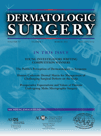Teaching Advanced Wound Closure Techniques Using Cattle Digits
Presented in part on the Annual Meeting of the Society for Medical Education (GMA) on October 9, 2009, Freiburg, Germany
Abstract
OBJECTIVES To evaluate a model used to impart advanced wound closure skills because available models do not meet the necessary requirements to a substantial degree.
MATERIALS AND METHODS Seventy-one residents were asked to evaluate a 75-minute-long skills course using cadaveric cattle digits to learn Z-plasty, V-Y-plasty, and oval-shaped rotational flaps. A short film and the course instructor demonstrated each technique first. A Likert rating scale ranging from 1 to 6 was used for questions in the survey given to the residents.
RESULTS There was strong agreement among residents (1.65±1.17 years of experience) that advanced wound closure training courses are necessary (5.73±0.73), which corresponded to the residents' low level of knowledge and self-assessment of practical skills and present experience (2.84±1.01). The course was evaluated with high acceptance, even though it was found to be demanding for the trainees (5.84±0.40). This might also be related to the high rating of the model itself, which was found to be a suitable method for teaching advanced wound closure techniques (5.50±0.71) that was easily comprehensible (5.73±0.53).
CONCLUSION Skills training courses for young trainees are warranted to impart advanced wound closure techniques. The curriculum using cattle digits presented here is recommended.
The authors have indicated no significant interest with commercial supporters.




